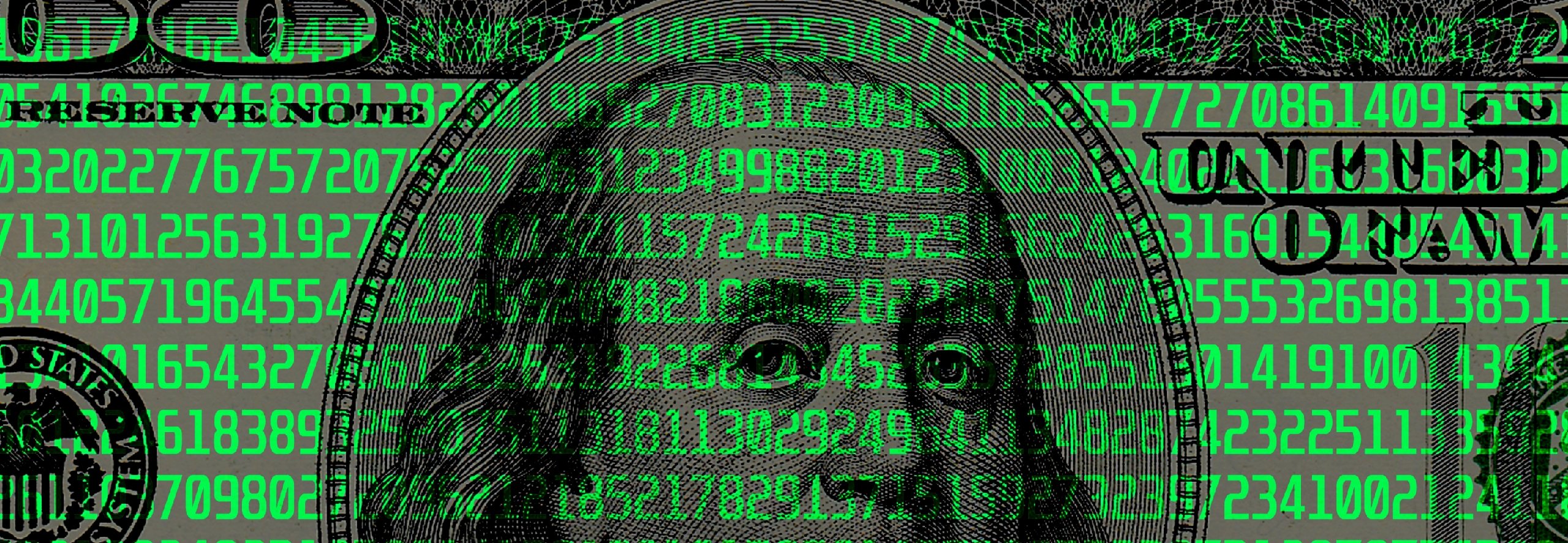Is the U.S. dollar in decline? Financial experts weigh in on its status in a changing world
IN BRIEF
- The gap between the U.S. dollar and other global currencies will decline over the next decade, as will its share of foreign trade, but I don’t see that happening in a significant way any time soon.
- A weakened dollar will not only has enormous economic implications, but political and geopolitical implications, as well.
- Business leaders, executives and directors need to prepare for a world where the dollar is less used for global commercial transactions whether the concept of a global reserve currency continues or not.
There’s certainly no shortage of stories about the de-dollarization movement going on around the world. In late January, retired Wall Street veteran Dick Bove told The New York Times: “The dollar is finished as the world’s reserve currency.” Bove is just the latest expert in a string of stories questioning the long-term viability of the U.S. dollar.
And last August, Brazilian president Luiz Inacio Lula da Silva did more than question when he boldly suggested the possibility of creating one single BRICS currency. The trial balloon was floated shortly after the bloc (with its original members of Brazil, Russian, India and China) had agreed to bring six new countries into the fold—Argentina, Egypt, Ethiopia, Iran, Saudi Arabia, and the United Arab Emirates. The “BRICS+6” account for 46% of the world’s population and 30% of global GDP. The “basket of BRICS currencies” could also be the greatest threat the U.S dollar has seen to its position as the world’s reserve currency for a long time.
Timing is everything: Just a few weeks after President Lula da Silva’s proclamation, VISION by Protiviti launched its exploration of the Future of Money. The theme examines the impact of cashless countries, cryptocurrencies and the digitization of the monetary system on business, commerce, financial markets, the geopolitics of the global economy and, yes, the U.S. dollar. We asked several economic experts to weigh in on whether the dollar could, would, or even should remain the world’s reserve currency— and what could potentially replace it and when.
BRICS currency a “non-starter”
Count The Economist’s Swarup Gupta among the BRICS doubters; Gupta calls a BRICS currency a “non-starter” because the BRICS itself is terribly lopsided.“ Any currency born out of a basket of currencies that make up the currencies of BRIC countries, even with new additions, will be dominated overwhelmingly by the digital yuan, and while that will satisfy China’s ambitions of internationalizing its currency, will other countries agree? India and China, for example, have prickly relations,” Gupta says.
More likely, Gupta envisions the eventual diversification away from the U.S. dollar to a different basket of currencies, one that could include the euro and yuan along with other allied countries. “I do think the gap between the U.S. dollar and other global currencies will decline over the next decade, as will its share of foreign trade, but I don’t see that happening in a significant way any time soon.”
“A race for digital dominance”
At the same time, Gupta says, the U.S. government, along with many governments around the globe, have shown a keen interest in wanting to “take back money and how it’s used as a sovereign tool of governance and policy making.”
This can be done much more easily in a digital world, says Mauro Guillén, Vice Dean at the University of Pennsylvania’s Wharton School, futurist and author of 2030: How Today’s Biggest Trends Will Collide and Reshape the Future of Everything.
Guillén says the race for digital dominance is on amid the uncertainty of a looming financial digital disruption. “The U.S. should be wary of what countries intent on increasing their influence over global financial matters might do,” he says. “China is planning to make a digital yuan accessible to its trading partners. In that case, the dollar, not commercial banks, would be disintermediated,” Guillen says. “Bypassing the U.S. dollar would require interoperability between the digital yuan and the CBDCs of China’s trading partners. That’s a big task, but the incentives for them to do so are huge.”
“The U.S. should be wary of what countries intent on increasing their influence over global financial matters might do. China is planning to make a digital yuan accessible to its trading partners. In that case, the dollar, not commercial banks, would be disintermediated.”
– Mauro Guillén, Vice Dean, University of Pennsylvania’s Wharton School
“A matter of national security”
Meanwhile, Matthew Le Merle, Managing Partner and CEO of Blockchain Coinvestors, asks: How could it make sense for China to do all of its global trade in U.S. dollars? “For the last 75 years, since we went off the gold standard, the U.S. has denominated Chinese global trade in U.S. dollars,” Le Merle says. “If you're the Chinese, or the Russians, you're going to say: ‘We can't have this. It's a matter of national security. We need alternative ways to transact with foreign countries.’”
Tom Vartanian, a longtime regulator who served in both the Carter and Reagan administrations, says we’re beginning to see a walk away from the dollar like we’ve never seen before. “The dollar’s global influence is waning,” he says. “Currently, it’s only used in 59% of global reserve currency transactions. That’s a big concern.”
Vartanian says a weakened dollar not only has enormous economic implications, but political and geopolitical implications, as well. “How does the United States implement economic sanctions on Russia if the dollar isn't the world’s preeminent currency? It can’t. And if we don't have economic sanctions as a tool, that only leaves us the military option. That’s a tough place be.”
“A debt dilemma”
Vartanian says there’s little doubt the dollar will lose its status in the world when someone else steps up to take it away. “Look, in the land of the blind, the one-eyed giant is king,” he says. “For the time being, we're probably okay because no one is all that ready to step up, but the trajectory we're on is simply unsustainable.”
Specifically, the enormous debt the U.S. has is unsustainable. We have a debt dilemma, Vartanian says. “We may not even know when we’ve crossed the line when the dollar is no longer king,” he says. “But once we do, there’s probably no coming back.”
The debt dilemma was echoed by several experts VISION by Protiviti spoke with. David Cowen, President and CEO of the Museum of American Finance, which chronicles the history of U.S. finance all the way back to its origins, put it most bluntly. “Alexander Hamilton famously said ‘if it is not excessive, our debt will be a national blessing.’ Well, it’s excessive and frankly, Hamilton would be spinning in his grave.”
Having the world's reserve currency has allowed the U.S. to run large deficits in terms of both international trade and government spending. If foreigners no longer want to hold dollars for savings, it would force significant belt-tightening at home, Vartanian says
“The U.S. would have to face the economic consequences of the financial pressures it has created over the last several decades from, among other things, gargantuan overspending, if the dollar did lose its status as the primary global currency,” he says. “Business leaders, executives and directors need to prepare for a world where the dollar is less used for global commercial transactions whether the concept of a global reserve currency continues or not.”
Either way, Guillén says, companies and governments would be wise to begin diversifying away from the dollar due to increased perceived risks. “American import-intensive firms would probably experience a spike in dollar-denominated prices,” he says. “American export-intensive firms would likely benefit because their products or services would become more competitive.”
"We have a debt dilemma. We may not even know when we’ve crossed the line when the dollar is no longer king, But once we do, there’s probably no coming back.”
– Tom Vartanian, former federal regulator
Execs still bullish on the dollar
Despite the experts’ caution signs and warnings, dollar doom-and-gloom was not detected among global business leaders VISION by Protiviti surveyed as part of our Executive Outlook on the Future of Money research conducted with the University of Oxford.
When it comes to what they saw as the biggest threats to their companies’ financial stability over the next 10 years, executives ranked the decline of the U.S. dollar dead last among a dozen choices. And nearly four in five respondents (79%) believe the U.S. dollar will still be the world’s dominant medium in 10 years’ time.
As we are about to undergo a seismic shift in the global monetary system, we can at least know that executives worldwide have confidence the U.S. dollar will remain the world’s reserve currency for the foreseeable future. And when we asked executives what could, potentially, replace the U.S. dollar someday, they overwhelmingly opted for another stable fiat currency, the euro (58%), with the Chinese yuan coming in second at 17%. Cryptocurrencies barely registered at all.
Crypto’s not ready for prime time
While cryptocurrencies, in all their many forms, are becoming more mainstream (the Securities and Exchange Commission’s approval of Bitcoin ETFs earlier this year signals they are here to stay), they won’t be the reason the dollar tumbles, says Eswar Prasad, Senior Professor of Trade Policy at Cornell University and author of the book, The Future of Money: How the Digital Revolution Is Transforming Currencies and Finance.
“The landscape of global reserve currencies may appear to be at the threshold of disruption as cryptocurrencies gain traction, but despite all the hype, the proliferation of cryptocurrencies will not have a substantial disruptive effect on the major reserve currencies, especially the U.S. dollar,” Prasad says. “The dollar could eventually lose some ground as a payment currency, although I think it will remain dominant both in this dimension and as a storer of value for the foreseeable future.”
And Aaron Lindstrom, the Americas region Head of Transformation and Digital Partnerships for Allianz Trade, says since crypto is not tied to a sovereign government, it fails on both the confidence and consistency measures.
Forecasting the future
“While nothing lasts forever, it’s hard for me to rationalize a world where the U.S. dollar is not central to trade finance,” Lindstrom predicts. “The U.S. economy is still the largest in the world and continues to be a net importer; our consumption and economic strength make us the world’s reserve currency now and that will continue well into the future.”
How far is well into the future? Lindstrom took a shot at a bold prediction for what money could look like in 2050. “I would say it will be transacted digitally but likely backed by water,” he says. “I can see a world in which currency is benchmarked to fresh water as the planet’s most valuable asset.”
Presumably, this will put the U.S. dollar underwater in just a few decades. Let that soak in.
“While nothing lasts forever, it’s hard for me to rationalize a world where the U.S. dollar is not central to trade finance."
– Aaron Lindstrom, Allianz Trade
































